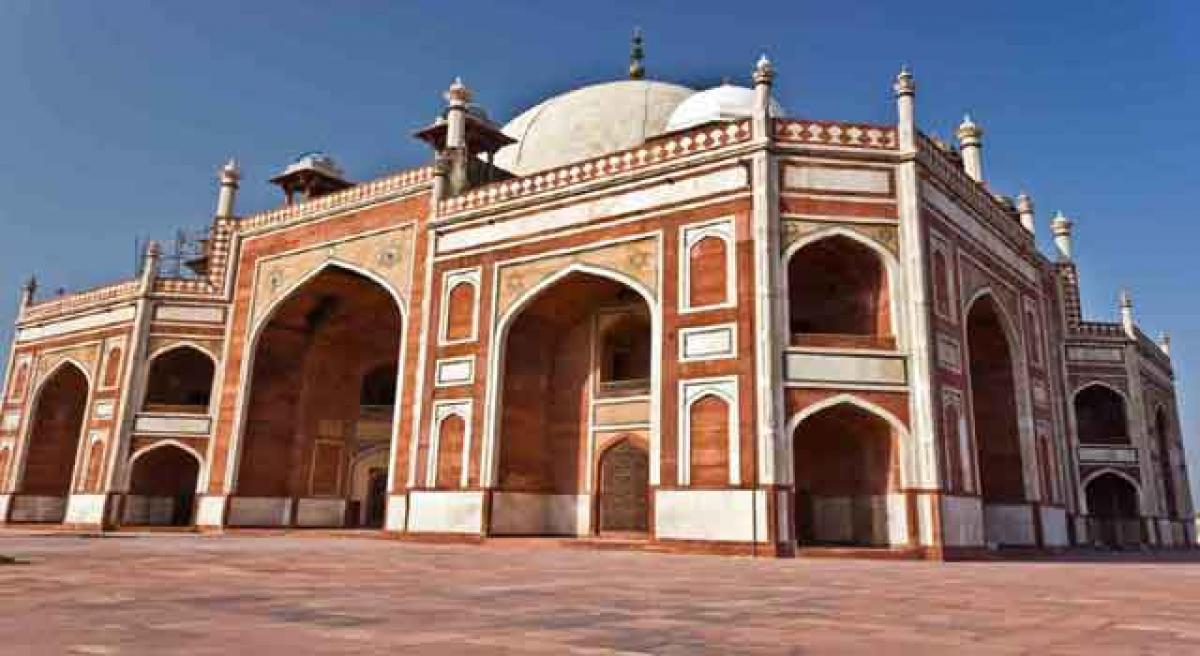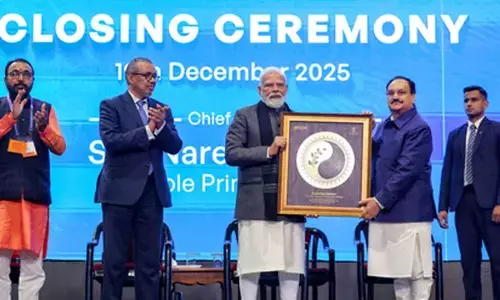Indo Islamic architecture

Indo-Islamic Architecture encompasses a wide range of styles from various backgrounds that helped shape the architecture of the Indian subcontinent from the advent of Islam in the Indian subcontinent around the 7th century. It has left influences on modern Indian, Pakistani and Bangladeshi architecture.
Indo-Islamic Architecture encompasses a wide range of styles from various backgrounds that helped shape the architecture of the Indian subcontinent from the advent of Islam in the Indian subcontinent around the 7th century. It has left influences on modern Indian, Pakistani and Bangladeshi architecture.
Both secular and religious buildings are influenced by Indo-Islamic architecture which exhibit Indian, Islamic, Persian, Central Asian, Arabic and Ottoman Turkish influences, many of which themselves were influenced by Indian architecture through the spread of Indian culture before the advent of Islam. This style of architecture saw the following features:
Arch and Dome method used
Minars also seen
Mortar used as cementing agent
No human representation
Spaciousness, Massiveness and breadth
Calligraphy and Arabesque technique
Arabesque Method
Geometricised vegetal ornament ; continuous stem which splits
Leafy stem which eventually merge into root stem
Figural representation of animals and humans strongly discouraged
Use of geometry for drawing symmetrical patterns
Jali-work on the walls ( Signifies Light in Islam)
Water – Courtyard pools, fountains etc and Mirages
Charbagh Style ; Peitradura Technique
Delhi Sultanate Style
The Delhi Sultanate's greatest contribution to Indian fine arts was the introduction of Islamic architectural features, including true domes and arches, and the integration of Indian and Islamic styles of architecture. Some of the major features of the Delhi Sultanate Style are:-
Imperial and Provincial
Slave Dynasty
Ilbari Style / Mamluk Style
Existing structure into Mosque
Quwwat ul Islam mosque – Jain Temple
Arhai Din Ka Johmpra
Qutub Minar – Hindu Temple
Khilji
Seljyuk
Red Sandstone and Arch and Dome method
Mortar as the cementing agent
Alai Darwaza – Alaunddin Khilji
(Half Dome)
Siri Fort. They established a city called siri near Delhi
Tughluqs
Grey Sand stone
Crisis Period
Focus on Straight lines rather than domes
Baltars – Slant Lines combining the arch and Lintel technique
3 Cities
Tughluquabad -GT
Jahanpura -MBT
Feroz shah Kotla -FST
Lodhi
Crisis Period continued
Double Dome concept was introduced
Most of the work was in Tomb Making
Hard based – Octagonal – 15m Diameter supported by a verandah
Sikanadar Lodhi established the city of ________ and also made it his capital
Repair works on Qutub minar
Delhi
Indraprashta – 1705
7 cities ofDelhi
Lal Kot or Qila Rai Pithora 1060 AD
Siri by AK
Tughluqabad – 1321-23
Jahanpanah – Mid 14th
Ferozabad 1354
Shergadh/ Dilli Shershahi 1534
Shahjahanabad 17th Century
Provincial
Bengal School
BB – Bricks and Black Marble
Focus on massive buildings rather than decoration
Kadam Rasul Mosque – Gaur , Bengal ; Adina Masjid Pandua Bengal Malwa School
Absence of Minar in the Mosque
Large Window and Wall Matt
Arch with pillar and beams – Well designed stairways
Rani Rupati Pavilion ; Ashrafi Mahal ; Jahaj Mahal, Mandu UP, Mandu Fort
Jaunpur School
Sharqi Style – No Minar
Bold and forceful Character expressed -Huge and Imposing
Atalo Masjid ; Babri Masjid
Bijapur School
Adil Shahi - 3 arched Facet
Bulbuous Domes
Chajja on the Corners
Ceilings without any apparent support
Use of Iron Clamps and Strong Mortar
Rich Stone Carvings
Mughal Architecture
Mughal architecture is an architectural style developed by the Mughals in the 16th, 17th and 18th centuries throughout the ever changing extent of their empire in Medieval India. It was an amalgam of Islamic, Persian,Turkic and Indian architecture. Mughal buildings have a uniform pattern of structure and character, including large bulbous domes, slender minarets at the corners, massive halls, large vaulted gateways and delicate ornamentation. Few major features seen in the same are:
Babur Humayun Not major Contributors
Babur
2 mosques – Panipat and Rohilkhand
Humayun
Foundations of Dinpanah - 1534
Shershah
Qila e Qunha
GT Road
Sher Shah Tomb at Bihar
Akbar 1556 – 1602
Agra Fort
Red sandstone, initiated by Akbar
Most of the construction done by ???
Mosti Masjid – Built by ?
Diwan e Aam and Diwan e Khas
Jehangir Mahal
Char Bagh Style
Harams – place where captured women were kept . Akabr’s haram had almost 5000 Women
Fatehpur Sikri
Fort
Buland Darwaza
Panch Mahal and Jodha Bhai Palace
Salim Chisti’s tomb – Jali work intricate
Jehangir
Akbar’s tomb near Sikandra – Agra
Itmad ud Daulah’s tomb by Noor Jahan – Agra
Peitra Dura –Large Scale
Complete use of white marble seen
Moti Masjid –Lahore
Own Tomb at Lahore
Shah Jahan
Taj Mahal ( Original name of Mumtaz Mahal ?)
Red fort at Delhi, Moti msjid inside Agra Fort
Shalimar Bagh, Lahore
Jama Masjid
Shahjahanabad
Peacock Throne
Arabesque, Peitra Dura and Mosque building technique reached its climax
Auragzeb
Architecture Declined and Lost patronage
Bibi ka Maqbara , Aurangabad
Badshahi Mosque
Sikh Architecture
Sikh Architecture, is a style of architecture that is characterized with values of progressiveness, exquisite intricacy, austere beauty and logical flowing lines. Due to its progressive style, it is constantly evolving into many newly developing branches with new contemporary styles.
Although Sikh architecture was initially developed within Sikhism its style has been used in many non-religious buildings due to its beauty. 300 years ago, Sikh architecture was distinguished for its many curves and straight lines. Some of the most common features amongst these are:-
Harminder Sahib 1764
- Foundation by Guru Ram Das and completion by Guru Arjun Dev
- Mughal Influence
- Features
- Multiplicity of Chatris
- Fluted dome with brass and copper covering
- Shallow corners
Modern Indian Architecture
Modern Indian Architecture largely includes the work of the Indian colonisers. Under colonial rule, architecture became an emblem of power, designed to endorse the patron. Numerous outsiders invaded India and created architectural styles reflective of their ancestral and adopted homes. The European colonizers created architecture that symbolized their mission of conquest, dedicated to the state or religion. The British, French, Dutch and the Portuguese were the main powers that colonized India.
Portuguese
The style brought in by the Portuguese include:-
- Iberian style
- Brick is the main material with wooden roof and stairs
- No new structures,, just reinterpretation of western
- Paltering and carvings are prominent
- Old Goa Church
- Gothic
- Red Sandstone
- Mystical structures
British
- Indo gothic and Neo Roman Styles
- Indo Gothic
- Indo Sarcenic Style
- Hybrid of Mughal with Gothic and Hindu Style
- Features
- Elaborate and Large Construction
- British Engineering Standards – Use of Steel Iron and Concrete
- Thin Walls + Pointe Arches + Large Windows
- Crucified Ground Plan
- St Pauls Cathedral Kolkata
- Victoria Memorial, Kolkata
- Chepauk Palace
- Lakshmi Vilas Palace
- Gateway of India
Neo Roman
- Neo Classical Style
- Edwin Lutyen and Edward Baker
- Anonymous construction – No particular dominant feature – Its a mix of all style
- Circular building and unperturbed domes
- Simplicity and utility compromised
- Laurie Baker
- Merged with building; Utilised locally available buildings
- Filler Slab Construction
- Ventilation and Thermal comfort arrangement in buildings
- Revolutionised mass housing in Kerala – Architect of the poor
By: Balalatha Mallavarapu














